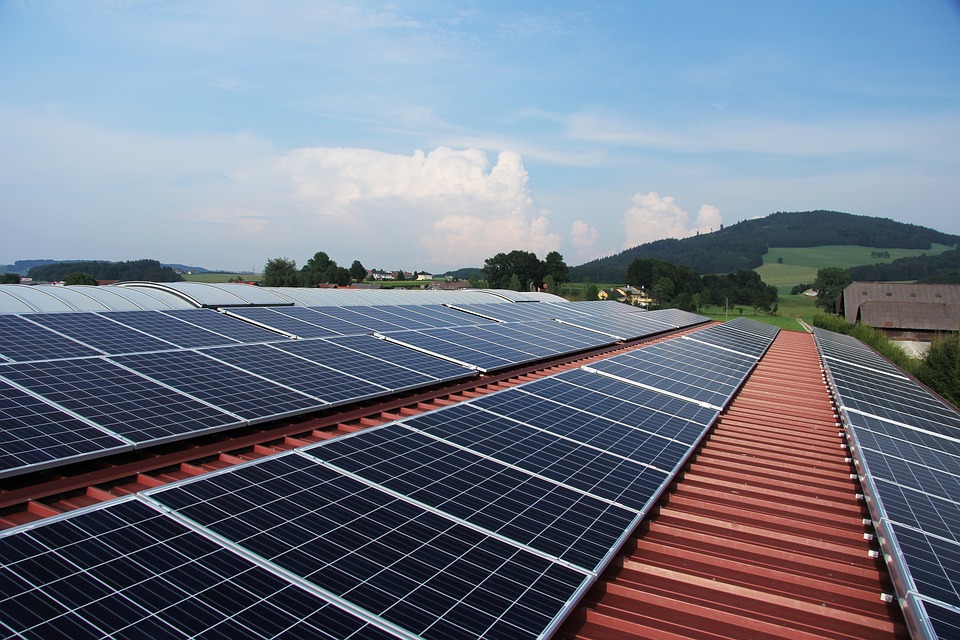As renewable energy gains momentum, solar photovoltaic (PV) systems have emerged as a popular choice for harnessing the power of the sun. Among various types of solar installations, grid-connected systems offer numerous advantages. In this Blog, we will delve into the inner workings of grid-connected solar PV system, explaining the key components and their interactions.
Table of Contents
Understanding Grid-Connected Solar PV Systems
Grid-connected solar PV systems, also known as grid-tied systems, are designed to generate electricity by converting solar energy into usable power. Unlike off-grid systems, which rely on batteries for energy storage, grid-connected systems are connected to the electrical grid. This connection allows for a seamless flow of electricity between the solar panels, the grid, and the consumer’s electrical appliances.
Components of a Grid-Connected Solar PV System
a) Solar Panels: The heart of the system, solar panels consist of multiple photovoltaic cells that convert sunlight into DC (direct current) electricity.
b) Inverter: The DC electricity produced by the solar panels is converted into AC (alternating current) electricity through an inverter. This is necessary because most household appliances and the electrical grid operate on AC power.
c) Bi-Directional Meter: To monitor the flow of electricity between the solar system and the grid, a bi-directional meter is installed. It records the electricity consumed by the household as well as the excess electricity exported back to the grid.
d) Electrical Panel: The electrical panel acts as a distribution point for the solar electricity. It ensures that the electricity generated by the solar system is used first before drawing power from the grid.
Working Principle of Grid-Connected Solar PV System
The operation of a grid-connected solar PV system can be summarized in the following steps:
a) Solar panels absorb sunlight and convert it into DC electricity. The number and orientation of the panels determine the amount of energy generated.
b) The DC electricity is sent to the inverter, where it is converted into AC electricity suitable for household use and grid compatibility.
c) The AC electricity produced by the inverter is then supplied to the electrical panel. The electrical loads in the house draw power from the solar system first, reducing the need for electricity from the grid.
d) If the solar system produces more electricity than the household requires, the excess energy flows back to the grid through the bi-directional meter. This excess electricity is credited to the consumer’s account, often referred to as net metering.
e) During periods when the solar system does not produce enough electricity (e.g., at night or during heavy cloud cover), power is seamlessly drawn from the grid to meet the household’s energy needs.
Advantages of Grid-Connected Solar PV Systems
Grid-connected solar PV systems offer several benefits, including:
a) Reduced Energy Costs: By generating electricity from the sun, homeowners can offset their reliance on the grid and reduce their electricity bills.
b) Environmentally Friendly: Solar energy is a clean, renewable resource that helps reduce carbon emissions and combat climate change.
c) Net Metering: Excess electricity generated by the solar system can be exported to the grid, leading to potential financial savings through net metering programs.
Disadvantages of a Grid Connected PV System
1. Dependency on the Grid: Grid-connected PV systems rely on the availability of the electrical grid. If there is a power outage or the grid fails for any reason, the system will also stop generating electricity. This means that even if the sun is shining and the PV panels are capable of producing electricity, it cannot be utilized unless the grid is operational.
2. High Initial Installation Cost: The initial cost of installing a grid-connected PV system can be relatively high. This is mainly due to the cost of the PV panels, inverters, wiring, and other necessary components. While the prices of PV systems have been decreasing over the years, the upfront investment required for installation can still be a barrier for some individuals or businesses.
3. Lack of Electricity during Power Outages (without battery backup): Standard grid-connected PV systems do not typically provide electricity during power outages. This is because they are designed to feed excess electricity back into the grid rather than store it for later use. Without a battery backup system, the PV system will not be able to supply electricity to the connected loads when the grid is down.
Conclusion
Grid-connected solar PV system provides a reliable and sustainable way to harness the power of the sun. By understanding the components and working principles, homeowners can make informed decisions when considering solar installations. These systems offer financial savings, environmental benefits, and contribute to a greener future. As technology advances and costs continue to decline, the adoption of grid-connected solar PV systems is expected to increase, facilitating the transition to a cleaner and more sustainable energy landscape.
Read Next Blog: Solis Inverter Review: Unleashing the Power of Solar Energy

